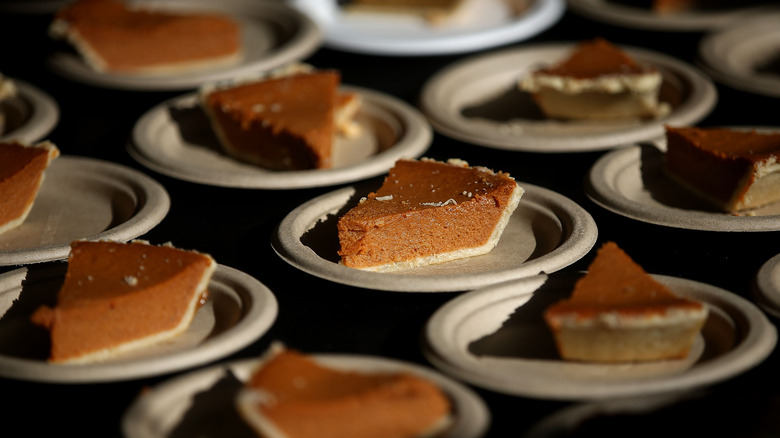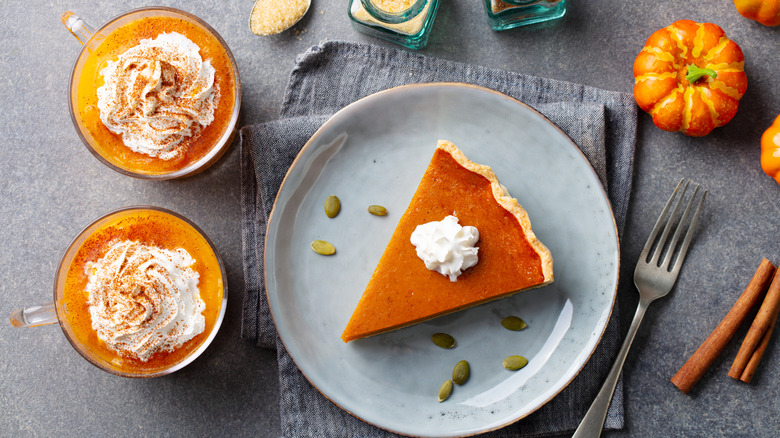How Pumpkin Pie Became An American Staple
You can top it with whipped cream or cover it in streusel. You see it every fall and you probably eat more than half of your weight in it around Thanksgiving. Pumpkin pie has been a staple of both American desserts and leftovers for as long as anyone can remember. With a pudding-like interior that tastes of fresh pumpkins and warm cinnamon, and a buttery, flaky crust, there are few fall desserts better than pumpkin pie. While just the mention of that sweet autumn treat is enough to elicit nostalgia, have you ever wondered about the pumpkin pie backstory?
Pumpkin is a native crop of North America and was introduced to Europe as part of the Columbian Exchange. As the exotic new crop entered Europe, many chefs began to experiment with pumpkin. According to Spoon University, dishes like French chef Francois Pierre la Varenne's 17th century recipe for "Tourte of Pumpkin," an almond-pumpkin dessert baked in a pastry crust, would be the early European "roots" of the modern-day pumpkin pie.
Another colonial-era recipe contained a pumpkin pie layered with apples, raisins, and herbs (via What's Cooking, America?). But you probably want to know about how pumpkin pie became so popular in the United States. What was the first recipe? Who made the first canned pumpkin? Don't let your hopes get squashed, reader, as there's plenty of history behind everyone's favorite Thanksgiving dessert.
From table to table: the history of pumpkin pie
In 1796, Amelia Simmons published "American Cookery," the first cookbook to be published by an American. In her popular cookbook, Simmons describes a recipe for "pompkin pudding," a pumpkin custard baked in a pastry crust. In 1824, Mary Randolph published "The Virginia House-wife," which also featured a recipe for pumpkin pie. While Simmons' and Randolph's recipes differ in minute adjustments, both recipes follow a roughly modern-day recipe to prepare a rudimentary pumpkin pie. As the recipe continued to travel through the decades of cookbooks and recipe cards, so did the popularity.
The dessert became the praise of not just diners, but also celebrated in the songs and poems of 1800s America, one famous example being "Over the River and Through the Woods," by abolitionist and poet Lydia Maria Child (via the Poetry Foundation). In the 1900s, as the canning industry grew, canned pumpkin became readily available, with Libby's meat canning releasing its own popular canned pumpkin mix in 1929 (via History). This removed the laborious work of having to prepare the raw pumpkin, one of the biggest obstacles in making pumpkin pie. For the first time, any American with basic cooking skills could prepare a pumpkin pie without the laborious task of stewing a pumpkin.
Today, 35% of people in the U.S. prefer pumpkin pie over pecan, apple, or sweet potato pie at Thanksgiving (via YouGov). And why wouldn't they? It really is an American tradition.

